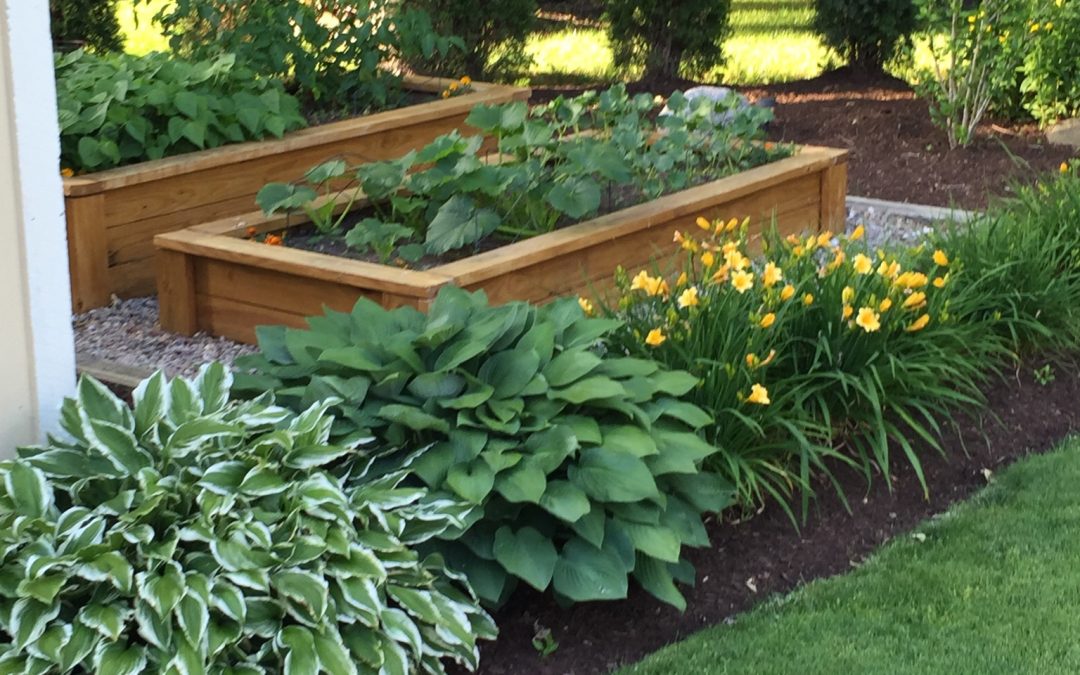By MARA BROOKS
The earth laughs in flowers,” poet Ralph Waldo Emerson famously wrote. But soil too sandy to plant in is no joke for many frustrated Cape Cod gardeners. While many Upper Cape towns boast good silt loams (ideal for growing a variety of plants), the dry, grainy soils of the lower Cape don’t provide enough moisture to support most flower and vegetable plants.
Luckily there’s a solution: the raised garden bed.
“Raised gardens are definitely a great alternative for areas where the soil is too sandy or stony,” said Russell Norton, a horticulture instructor at University of Massachusetts Extension. “With a raised bed you can customize the soil depending on the plants you want to grow.”
But designer soil isn’t the only advantage of raised gardens. Their increased height and defined width is ideal for those who are older or handicapped. You can place a raised garden in optimal lighting conditions according to the plant and it allows for better weed and pest control.
And because raised bed soil warms up more quickly after cold winter temperatures, gardeners can extend the growing season by planting earlier.
“There really aren’t many drawbacks that I can think of to having a raised garden,” said Terry Soares of Soares Nursery. “Other than the initial investment.”
How much of an investment depends on the size of your raised garden and the type of plants you want to grow.
A standard raised garden is three to four feet wide and can be a variety of lengths, according to gardener preference. The frames that give the garden its rectangle shape are often made from cedar (popular for its rot-resistance), or the more cost-effective plastic lumber. But beware of using treated wood if you plan on growing vegetables, as they often contain copper-based preservatives or creosote, which can cause toxic leaching. Some gardeners opt for simple frames made of bricks or even concrete blocks to save money and to avoid wood-related issues such as rotting or carpenter ant infestations.
But one thing you can’t scrimp on when planting a raised garden is soil.
“You’ll want to invest in screened loam,” Ms. Soares said. “An 8×12 raised bed will take a yard of loam.”
After filling the bed half to three-quarters full with a loam base, Ms. Soares recommends adding dehydrated or composted cow manure to top it off.
“Make sure it’s cow and not horse manure,” Ms. Soares said. “If you fill the bed with quality soil you’ll have much fewer weeds.”
To avoid weeds completely, Ms. Soares recommends using aged seaweed for mulch.
“Seaweed contains sea minerals and it doesn’t break down as quickly as other products,” Ms. Soares said. “You’ll have no weeds at all, if you use seaweed.”
As for how deep a raised bed should be, it depends on the plant you’re trying to grow. Most gardeners recommend a minimum of 10 to 12 inches, which is just deep enough for shallow root vegetables like strawberries and cabbage. But if you’re planning to harvest deep root vegetables like rhubarb and watermelon, you’ll need a soil depth of two feet or more.
That doesn’t mean you’ll need to break your bank account buying loam and dehydrated cow manure. Because unlike container beds (which they are often mistaken for), raised gardens are open at the bottom, which allows the plant to utilize additional soil depth and nutrients in the ground below.
Just don’t forget to water.
“Raised beds require more water because they drain faster,” Mr. Norton said. “So you need to stay on top of watering more than if you had a ground garden.”

